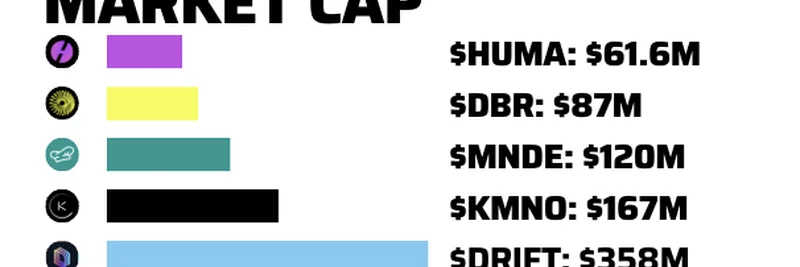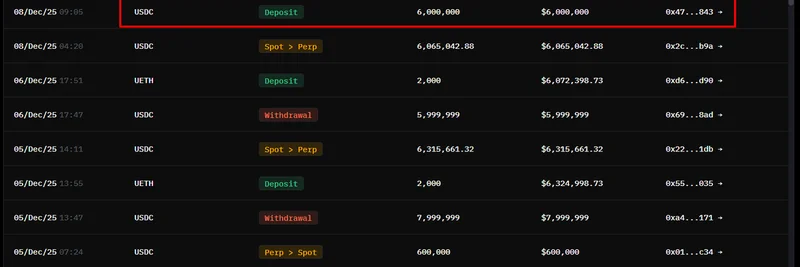In the fast-paced world of Solana DeFi, where projects pop up and evolve overnight, figuring out which tokens have real growth potential can be tricky. But Fabiano Solana, a DeFi expert making waves on X, just dropped a simple yet powerful tip: focus on revenue, especially in bear markets. In his latest tweet, he breaks it down with a clear chart comparing annualized revenue, market caps, and the key ratio of market cap to revenue for top Solana protocols like Drift, Kamino, Huma, DeBridge, and Marinade.
The idea is straightforward—tokens with strong revenue but relatively low market caps are often undervalued, offering room for significant upside. Think of it like traditional stocks: a company earning big bucks but trading cheap is a buy signal. In crypto, this approach helps cut through the hype and spot gems that could 2x or 5x as the market catches on.
Breaking Down the Chart: Revenue Leaders on Solana
Let's unpack the visuals. The top section shows annualized revenue, which is basically a project's yearly earnings extrapolated from recent data. It's a measure of how much real money the protocol is generating through fees, yields, or other income streams.
- Drift tops the list at $25M, making it a powerhouse in Solana's perpetual futures trading space.
- Huma follows at $17M, focusing on real-world asset (RWA) lending and credit protocols that bridge traditional finance with blockchain.
- Kamino at $14M, known for its automated liquidity provision and yield optimization tools.
- DeBridge with $13M, a cross-chain bridging solution that's gaining traction for seamless asset transfers.
- Marinade rounds out at $11M, a liquid staking platform for SOL that helps users earn rewards without locking up their tokens.
Revenue matters because it's a sign of product-market fit. In bull markets, hype drives prices, but when things cool off, sustainable earnings keep projects afloat and attract long-term holders.
Market Caps: Where the Value Lies
Next up is market cap, the total value of all circulating tokens. This is what investors pay attention to for sizing up a project's scale.
- Drift leads again with a hefty $358M market cap, reflecting its established position.
- Kamino at $167M, showing solid investor confidence in its DeFi automation features.
- Marinade at $120M, a staple for Solana stakers.
- DeBridge at $87M, which seems modest given its bridging utility across chains.
- Huma at $61.6M, the smallest here but punching above its weight in revenue.
Market cap alone doesn't tell the full story—it's the comparison to revenue that reveals opportunities.
The Magic Ratio: Market Cap Divided by Revenue
This is where Fabiano's insight shines. The lower the ratio, the more "mispriced" a token might be, meaning it has room to grow as revenue justifies a higher valuation.
- Drift sits at 14.3, indicating it's fairly valued or even premium-priced relative to earnings.
- Kamino at 11.9, similar story—strong but not screaming undervalued.
- Marinade at 9.2, respectable but not the biggest bargain.
- DeBridge at 6.7, starting to look attractive for upside.
- Huma at a low 3.6, the standout here with potential for an easy 2-5x as Fabiano points out.
Why does this ratio work? In traditional finance, it's like a price-to-sales (P/S) multiple. Low ratios suggest the market hasn't fully priced in the project's earning power, especially for newer or under-the-radar tokens like Huma and DeBridge. As adoption grows, these could see their market caps catch up quickly.
Why This Matters for Crypto Enthusiasts and Meme Token Hunters
Even if you're deep into meme tokens on Solana—where virality and community drive gains—applying fundamental analysis like this can level up your game. Memes thrive on narratives, but blending in revenue metrics helps spot sustainable plays that survive market dips. Projects like Huma (with its RWA focus) and DeBridge (enabling cross-chain memes) could bridge the gap between fun and fundamentals.
Fabiano emphasizes that this isn't a knock on higher-ratio tokens like Drift or Kamino—they can still expand through innovation. It's just that Huma and DeBridge appear undervalued right now, making them prime picks for portfolio diversification.
If you're scouting Solana DeFi, tools like Dexscreener or DefiLlama can help verify these numbers in real-time. Always DYOR, but starting with revenue-to-market-cap ratios is a smart, data-driven move.
What do you think—ready to hunt for low-ratio gems? Check out the full thread on X for more community takes.


